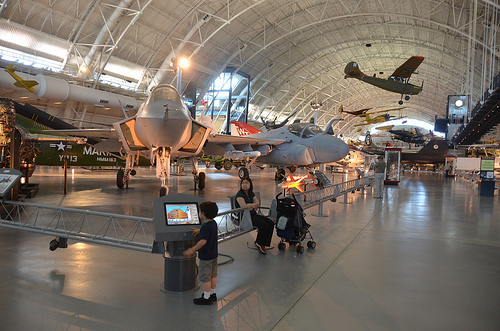A handful of nice inspection firm china photos I identified:
Steven F. Udvar-Hazy Center: Lockheed Martin X-35B Joint Strike Fighter, with other modern jet aircraft

Image by Chris Devers
Quoting Smithsonian National Air and Space Museum | Lockheed Martin X-35B STOVL:
This aircraft is the 1st X-35 ever constructed. It was initially the X-35A and was modified to contain the lift-fan engine for testing of the STOVL idea. Amongst its many test records, this aircraft was the first in history to achieve a brief takeoff, level supersonic dash, and vertical landing in a single flight. It is also the first aircraft to fly employing a shaft-driven lift-fan propulsion system. The X-35B flight test system was one of the shortest, most effective in history, lasting from June 23, 2001 to August six, 2001.
The lift-fan propulsion program is now displayed subsequent to the X-35B at the Steven F. Udvar-Hazy Center close to Dulles Airport.
On July 7, 2006, the production model F-35 was officially named F-35 Lightning II by T. Michael Moseley, Chief of Employees USAF.
Transferred from the United States Air Force.
Date:
2001
Dimensions:
Wing span: ten.05 m (33 ft in)
Length: 15.47 m (50 ft 9 in)
Height: about five m (15 ft in)
Weight: around 35,000 lb.
Supplies:
Composite material aircraft skin, alternating steel and titanium spars. Single-engine, single-seat configuration includes lift-fan and steering bars for vertical flight.
Physical Description:
Short takeoff/vertical landing variant to be utilised by U.S. Air Force, U.S. Marines and the United Kingdom, equipped with a shaft-driven lift fan propulsion system which enables the aircraft to take off from a quick runway or little aircraft carrier and to land vertically.
Engine: Pratt & Whitney JSF 119-PW-611 turbofan deflects thrust downward for short takeoff/vertical landing capability. The Air Force and Navy versions use a thrust-vectoring exhaust nozzle. The Marine Corps and Royal Air Force/Navy version has a swivel-duct nozzle an engine-driven fan behind the cockpit and air-reaction control valves in the wings to provide stability at low speeds.
Other major subcontractors are Rolls Royce and BAE.
• • • • •
Quoting Smithsonian National Air and Space Museum | Grumman A-6E Intruder:
The Navy’s expertise in the Korean War showed the want for a new lengthy-variety strike aircraft with high subsonic performance at very low altitude–an aircraft that could penetrate enemy defenses and find and destroy tiny targets in any climate. The Grumman A-6 Intruder was developed with these needs in mind. The Intruder initial flew in 1960 and was delivered to the Navy in 1963 and the Marine Corps in 1964.
The Navy accepted this airplane as an "A" model in 1968. It served beneath harsh combat situations in the skies over Vietnam and is a veteran of the 1991 Desert Storm campaign, when it flew missions during the very first 72 hours of the war. It has accumulated a lot more than 7,500 flying hours, over 6,500 landings, 767 carrier landings, and 712 catapult launches.
Transferred from the United States Navy, Workplace of the Secretary
Date:
1960
Country of Origin:
United States of America
Dimensions:
Overall: 16ft 2in. x 52ft 12in. x 54ft 9in., 26745.8lb. (four.928m x 16.154m x 16.688m, 12131.8kg)
Components:
Standard all-metal, graphite/epoxy wing (retrofit), aluminium control surfaces, titanium high-strength fittings (wing-fold).
Physical Description:
Dual location (side by side), twin-engine, all-weather attack aircraft a number of variants.